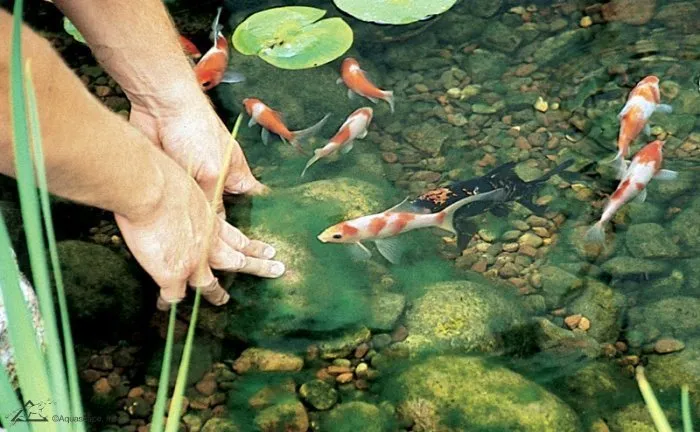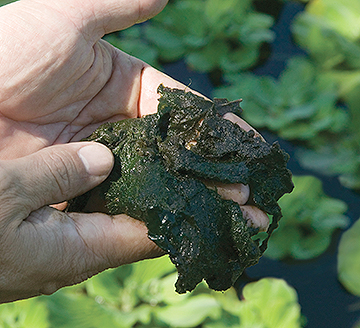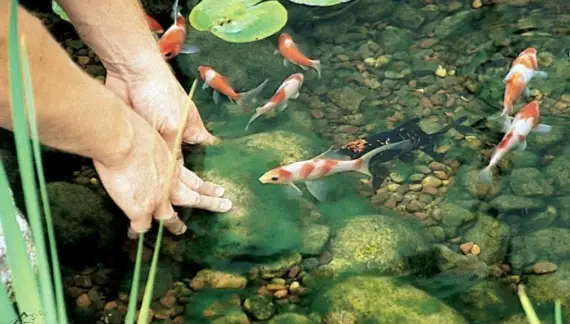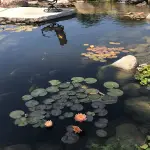Algae can be a common problem in ponds, causing green water, string algae, and other issues that can detract from the beauty and health of your pond. However, there are several effective methods for controlling algae and maintaining a balanced and healthy pond ecosystem.
Understanding Algae
Before diving into the control methods, it’s important to understand what algae is and why it forms in ponds. Algae are simple, non-flowering plants that can range in size from microscopic to large seaweeds. They thrive in environments with an abundance of nutrients, sunlight, and warm temperatures – all of which are commonly found in ponds.
1. Balance the Pond Ecosystem
One of the most effective ways to control algae is to create a balanced ecosystem within your pond. This involves establishing a healthy mix of aquatic plants, beneficial bacteria, and pond fish. Aquatic plants compete with algae for nutrients, shading the water and reducing the amount of sunlight available for algae growth. Additionally, beneficial bacteria help break down organic matter, reducing the nutrients available to fuel algae growth. Fish, such as koi and goldfish, can also play a role in controlling algae by consuming algae and mosquito larvae.
2. Proper Filtration
Installing a proper filtration system is crucial for maintaining water clarity and controlling algae in a pond. A combination of mechanical and biological filtration can help remove algae-promoting nutrients and provide a suitable environment for beneficial bacteria to thrive. Mechanical filtration removes debris and solid particles from the water, while biological filtration supports the growth of beneficial bacteria that can break down organic waste and nutrients. Be sure to choose a filtration system that is sized appropriately for your pond’s volume and stocked fish load.

Credit: www.aquascapeinc.com
3. Limit Nutrient Input
Algae require nutrients to grow, and excess nutrients in the pond can fuel algae blooms. Limiting the input of nutrients into the pond can help control algae growth. Avoid overfeeding fish, as uneaten food can decompose and release nutrients into the water. Additionally, minimize the use of fertilizers and pesticides in the surrounding areas, as these chemicals can wash into the pond and contribute to nutrient buildup.
4. Shade the Pond
Reducing the amount of sunlight that reaches the water’s surface can help control algae growth. Introducing floating plants, such as water lilies or lotus, can provide shade and reduce the availability of sunlight for algae. Additionally, creating a canopy of trees or installing shade sails above the pond can further limit the sunlight reaching the water, helping to deter algae growth.

Credit: www.tetra-fish.com
5. Use Barley Straw
Barley straw has been used for centuries as a natural method for controlling algae in ponds. When barley straw decomposes in water, it releases compounds that can inhibit the growth of algae. Barley straw can be placed in mesh bags and strategically positioned in the pond to allow for water flow around the straw, maximizing its effectiveness. While not an instant solution, barley straw can provide long-term algae control when used consistently.
6. Consider UV Clarifiers
UV clarifiers are a popular and effective tool for controlling algae in ponds. These devices use ultraviolet light to destroy algae cells, preventing them from reproducing and causing green water. UV clarifiers are typically installed in conjunction with a pond’s filtration system and can help maintain water clarity by targeting free-floating algae particles. When used correctly, UV clarifiers can significantly reduce algae populations and contribute to a healthier pond environment.
7. Regular Maintenance
Consistent and thorough pond maintenance is essential for controlling algae and promoting a healthy aquatic environment. This includes removing debris, such as leaves and twigs, from the water’s surface, trimming and thinning aquatic plants to prevent overgrowth, and regularly cleaning and maintaining the filtration system. By staying proactive with maintenance tasks, you can help prevent nutrient buildup and minimize conditions that favor algae growth.
Conclusion
Controlling algae in a pond requires a multifaceted approach that addresses the underlying causes of algae growth. By establishing a balanced ecosystem, implementing proper filtration, limiting nutrient input, shading the pond, utilizing natural remedies like barley straw, considering UV clarifiers, and maintaining the pond regularly, you can effectively control algae and enjoy a clear, healthy, and vibrant pond environment.
Remember that each pond is unique, so it may take some experimentation and adjustments to find the most effective combination of methods for controlling algae in your specific pond. By staying proactive and attentive to your pond’s needs, you can create an environment that is inhospitable to algae and supportive of a diverse and thriving aquatic ecosystem.





